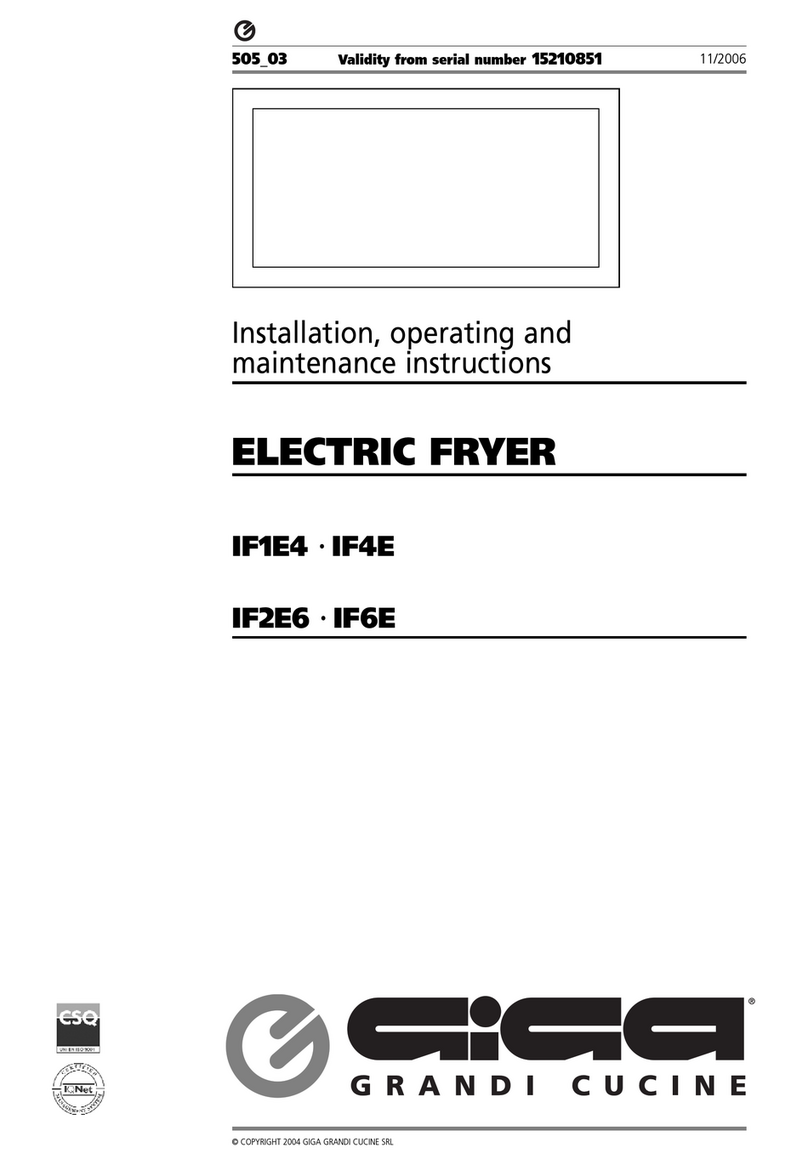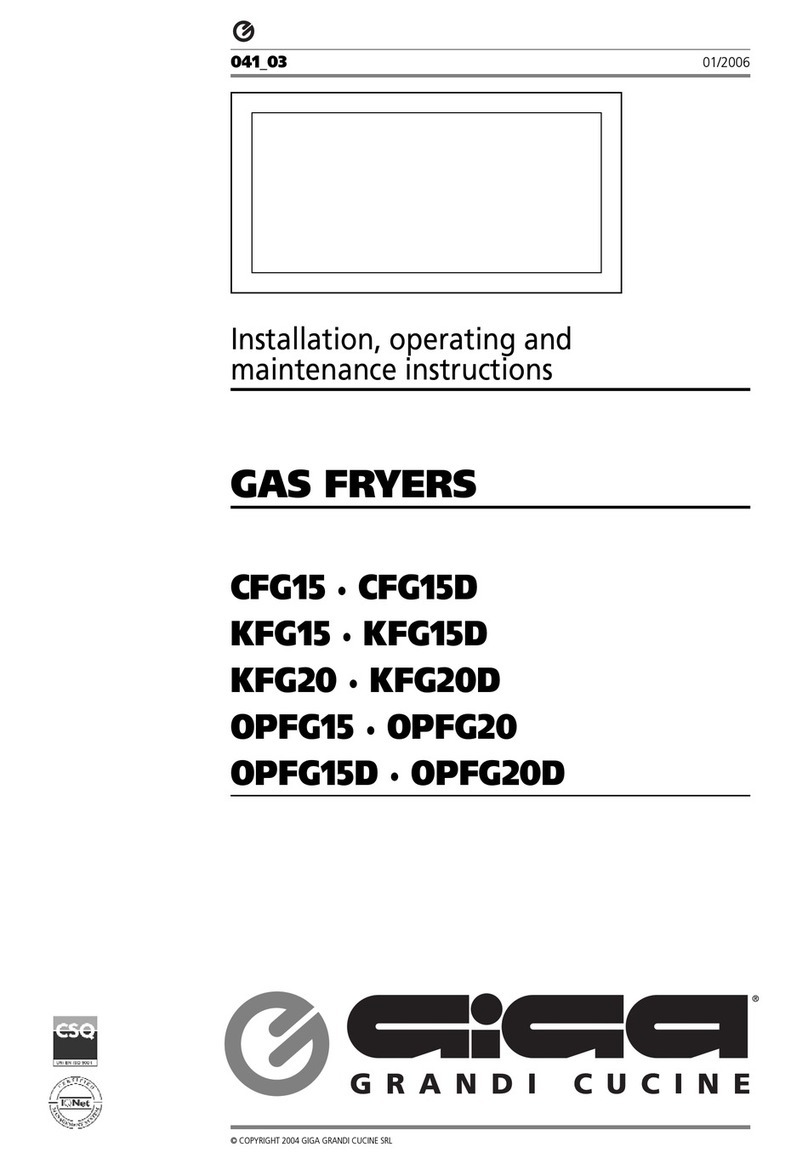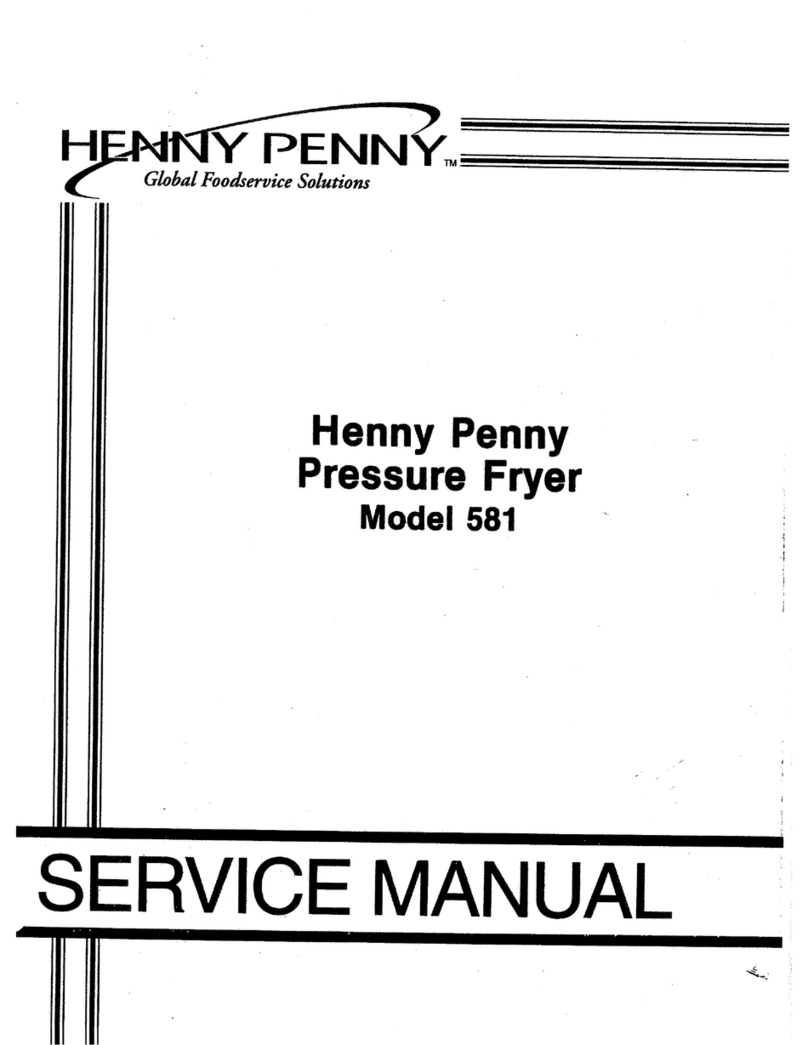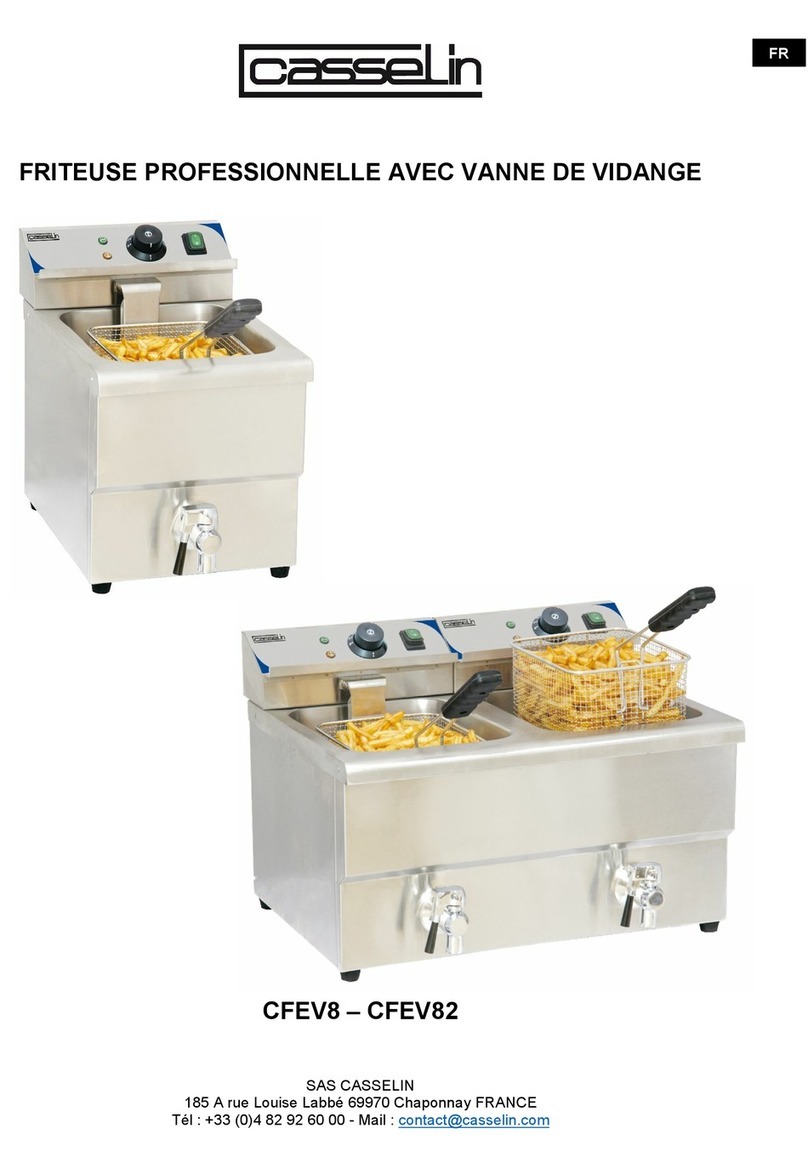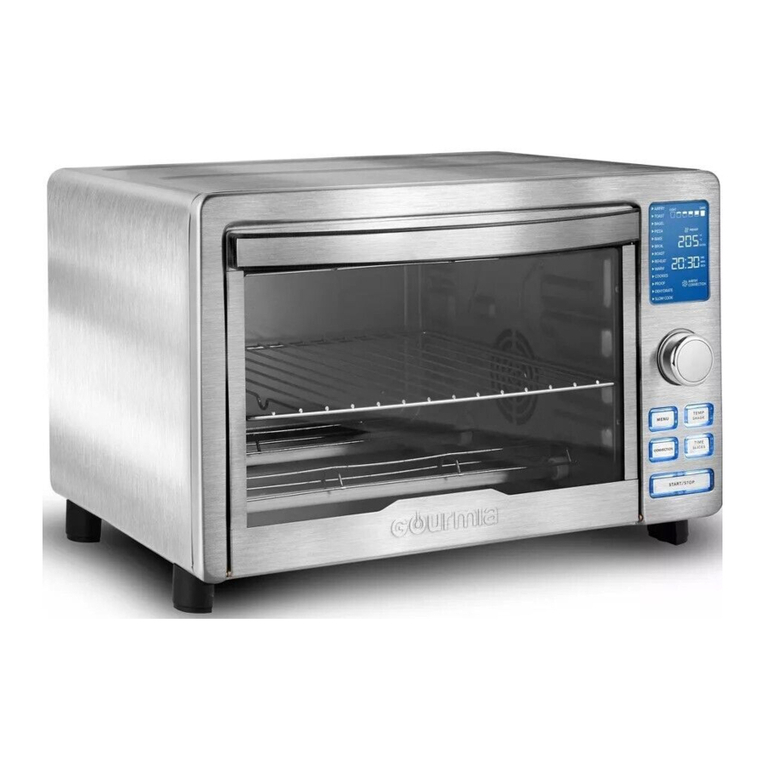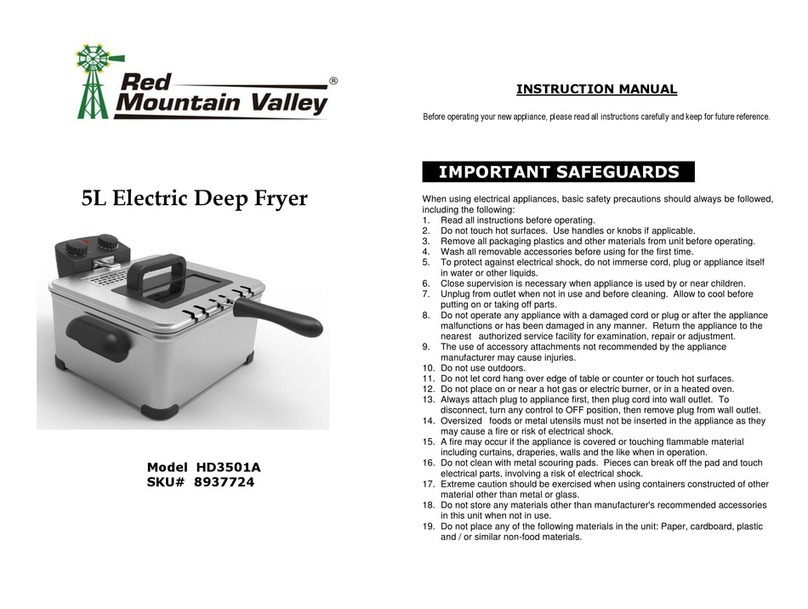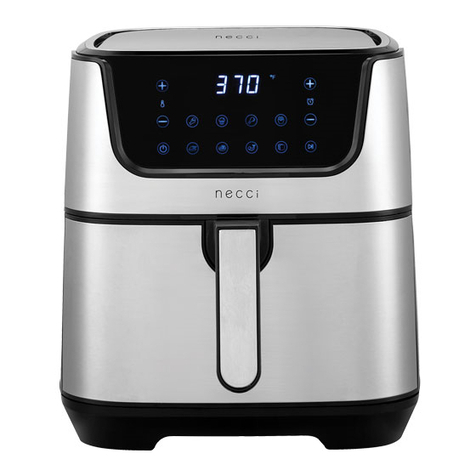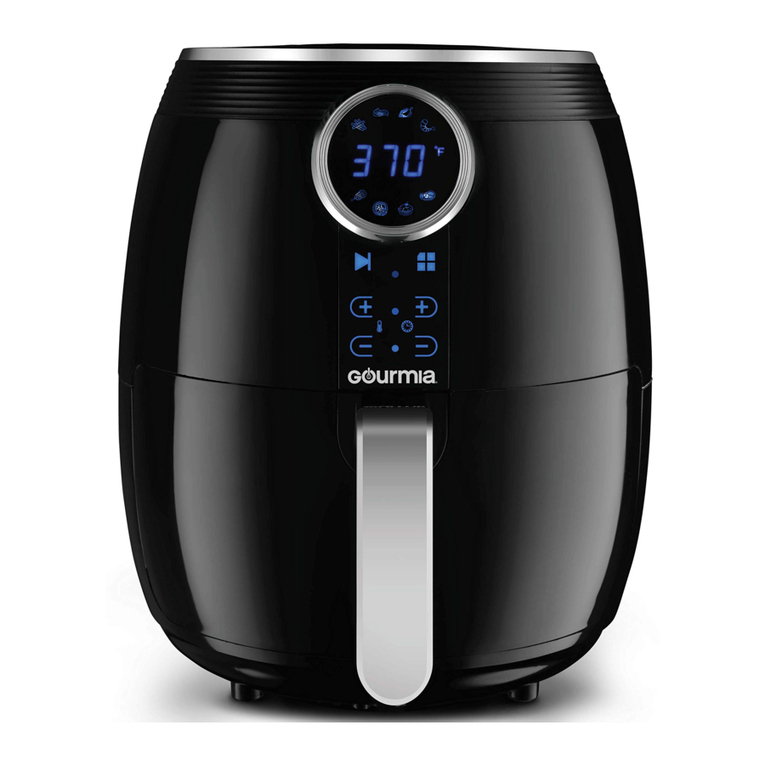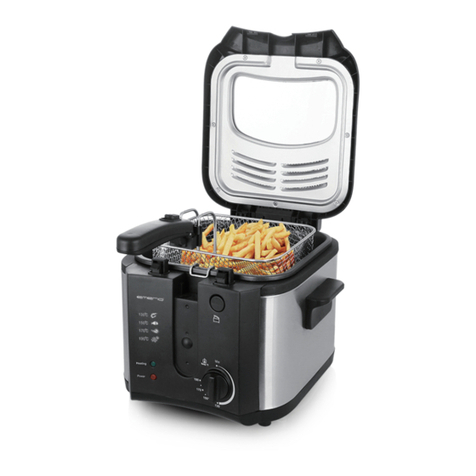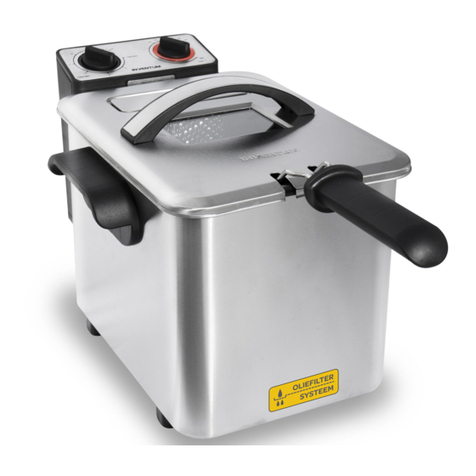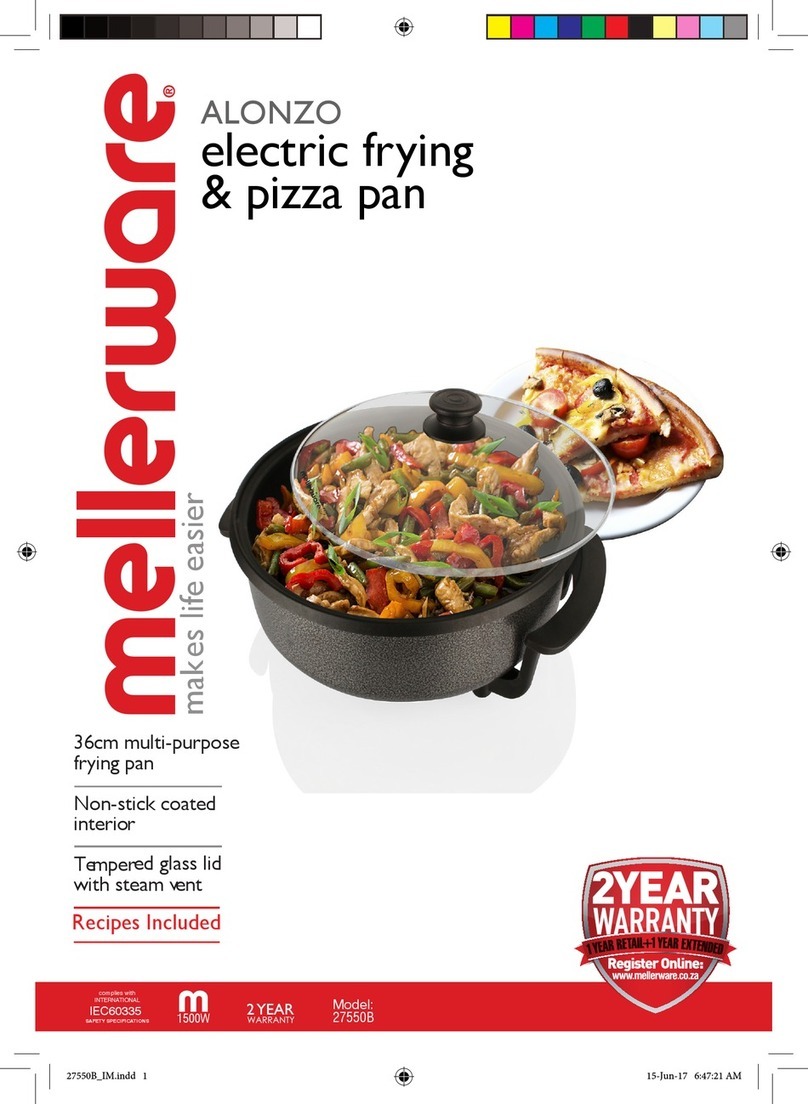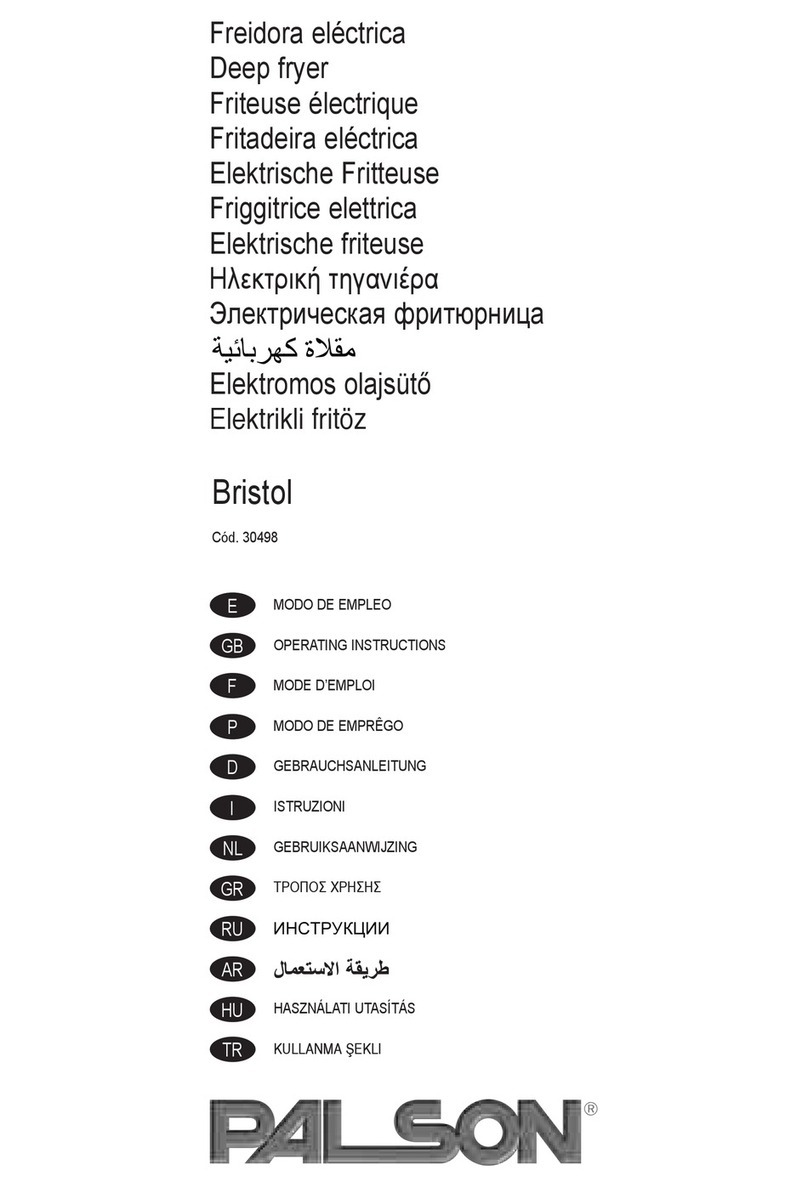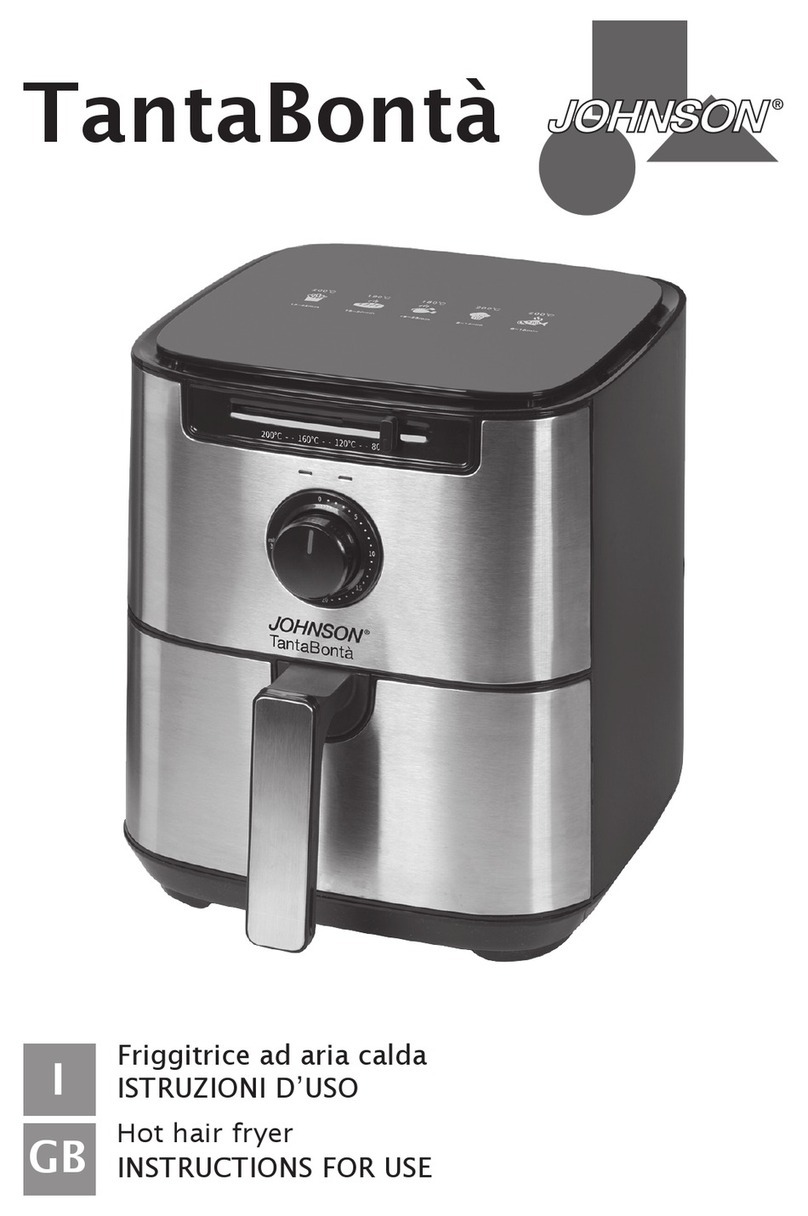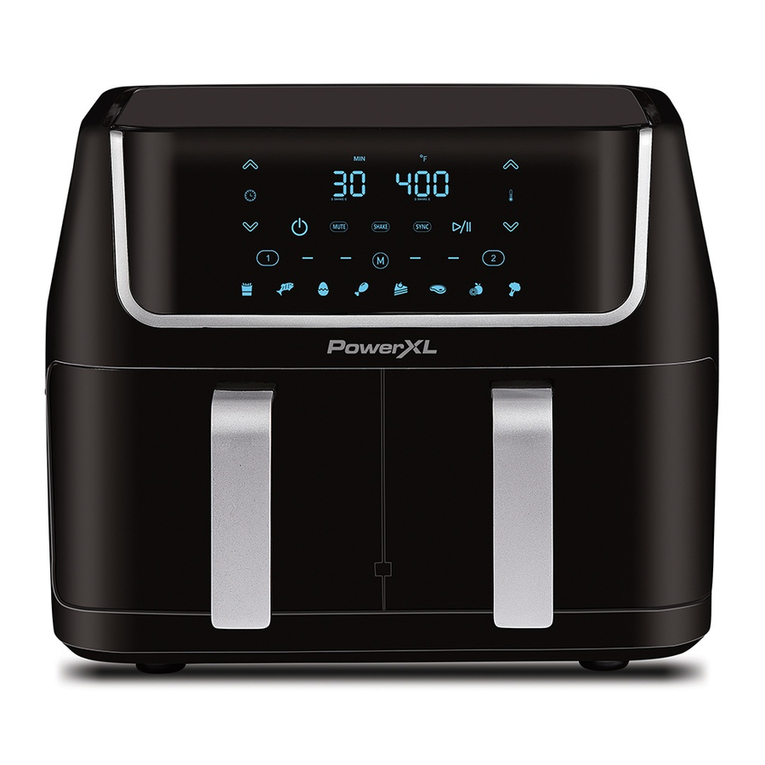GIGA IFTE1 User guide

504_03
Installation, operating and
maintenance instructions
© COPYRIGHT 2004 GIGA GRANDI CUCINE SRL
ELECTRIC FRY-TOP
IFTE1 · IFTE1C · IFTE1R
IFTE2 · IFTE2C · IFTE2R
IFTE22 · IFTE2C2 · IFTE2R2 · IFTE2LR
IFTE3 · IFTE3C · IFTE3R · IFTE3LR
09/2015

CHARACTERISTICS
504_03 - ELECTRIC FRY-TOP
2· 18
Supplied by:
Date:
Customer Service:
FAX
e-mail

INDEX
504_03 - ELECTRIC FRY-TOP
3· 18
1 Diagram 4
2 Features of the appliances 5
3 Technical data 5
4 Installation instructions 6
4.1 Safety rules 6
4.2 Structure, framework and safety devices of the appliances 6
4.3 Assembly 6
4.3.1 Installation premises 6
4.3.2 Statutory regulations and technical requirements 6
4.3.3 Installation 6
4.3.4 Wiring 6
4.3.5 Equipotential 6
4.4 Preparing for installation 6
5 Operation preparation 7
5.1 Preparation and Start-up 7
5.1.1 Start-up 7
5.1.2 Operator training 7
5.2 Maintenance 7
5.3 Ignition 11
5.4 Cleaning and taking care of the machine 11
6 Instructions for use 12
6.1 Safety, cleaning and repair rules 12
6.2 Turning the appliance off in case of breakdown 12
6.2.1 What to do in case of failure or prolonged period of
disuse 12
6.3 Appliance care and frequency of maintenance 12
6.4 Recommendations for handling stainless steel industrial
kitchens 12
6.4.1 Useful information on stainless steel 12
6.4.2 Warnings and advice for maintenance of stainless steel
appliances 13
6.4.3 WEEE Directive 13
7 Appendix: Electrical diagrams 14-17

1 - DIAGRAM
504_03 - ELECTRIC FRY-TOP
4· 18
C
B
S
S S
S
H
T
C
B
H
C
B
H
T
C
B
H
T
C
B
H
C
B
H
T
IFTE2IFTE2
IFTE2CIFTE2C
IFTE2RIFTE2R
IFTE3IFTE3
IFTE3CIFTE3C
IFTE3RIFTE3R
IFTE3LRIFTE3LR
IFTE22IFTE22
IFTE2C2IFTE2C2
IFTE2R2IFTE2R2
IFTE2LRIFTE2LR
IFTE1IFTE1
IFTE1CIFTE1C
IFTE1RIFTE1R
IFTE2IFTE2
IFTE2CIFTE2C
IFTE2RIFTE2R
IFTE3IFTE3
IFTE3CIFTE3C
IFTE3RIFTE3R
IFTE3LRIFTE3LR
IFTE22IFTE22
IFTE2C2IFTE2C2
IFTE2R2IFTE2R2
IFTE2LRIFTE2LR
IFTE1IFTE1
IFTE1CIFTE1C
IFTE1RIFTE1R
AA
DD
90901313
4848
11.511.511.511.5
556556
536536
597597
257257
620620
540540
257257
532532
1515
218218
302302
100100
92.592.5
4848
610610
DD
4848
4848 257257 257257
610610
1515
11.511.5
736736
740740
532532
218218
302302
400400
800800
556556
777777 11.511.5
1313 1001009090
610610
4848
4848 257257 257257
92.592.5
92.592.5
138138
3333170170
160160
1313 9090 100100
AA
FF
SS
166166
218218
407407
1515
1515
610610
EE
9090 1001001313
11.511.511.511.5 597597
536536
556556
540540
620620
532532
356356
316316
377377 11.511.5
257257 4848 90901313 100100
340340
4848 257257
AA
302302
218218
1515
1515
DD
400400
532532 302302
11.511.5
218218
TT
VV
VV
V = VIteV = VIte
VV
A
B
H
C
E
F
D
T
V
Terminal board
Knob
Yellow indicator light (resistance)
Green indicator light (tension)
Equipotenital
Oil drainpipe
Cable input
Data plate
Screw
Fig. 1

2 - CHARACTERISTICS OF THE APPLIANCES
3 - TECHNICAL DATA
504_03 - ELECTRIC FRY-TOP
5· 18
These appliances are used for professional purposes. Installation,
repair and use must be carried out by expert personnel.
The data plate (T) is located on the appliance and contains all the
data needed for installation.
TIPO/TYPE
CAT/KAT GAS/GAZ G30 G31 G20 G25
II2H3B/P P mbar 30 30 20 -
II2H3+ P mbar 30 37 20
-
-
II2H3+ P mbar 28 37 20 -
25II2L3B/P P mbar 30 30
II2ELL3B/P P mbar 50 50 20 20
II2E+3+ P mbar 28 37 20 25
II2H3B/P P mbar 50 50 20 -
I2E P mbar - - 20 -
--II2H3B/P P mbar 30 30
II2H3+ P mbar 28 37 20 -
--
--
I3B/P P mbar 30 30
I3+ P mbar 28 37
SE FI DK CZ SK SI
IT CH PT
ES IE GB GR
NL
DE
FR BE
AT CH
LU
EE LV LT
EE LV LT
NO MT CY IS HU
CY
MOD.
MOD.
ART.
N.
N.
Qn kW
m3/h
MADE IN ITALY
Predisposto a gas: - Gas preset: - Prevu pour gaz:
Eingestelt für Gas: - Preparado para gas: -
Geschuckt voor:
V AC kW Hz
THE APPLIANCE MUST BE CONNECTED IN COMPLIANCE WITH THE LAWS IN FORCE
AND INSTALLED IN A WELL-VENTILATED ROOM. READ THE INSTRUCTION MANUALS
BEFORE INSTALLING AND USING THE APPLIANCE.
THE APPLIANCE MUST BE INSTALLED BY QUALIFIED PERSONNEL.
Model
IFTE1/E1C/E1R
IFTE2/E2C/E2R
IFTE22/2C2/2R2/2LR
IFTE3/E3C/E3R/E3LR
E = smooth plate
EC = chromium plate
ER = grooved plate
ELR = smooth-grooved plate
2 = 2 separate cooking areas
Dim.: LxWxH (total h)
of work surface
400 x 610 x 220 (300)
620 x 610 x 220 (300)
620 x 610 x 220 (300)
800 x 610 x 220 (300)
Voltage rating
400 V 3N or 230 V 3
400 V 3N or 230 V 3
400 V 3N or 230 V 3
400 V 3N or 230 V 3
Power
5.0 kW
7.0 kW
7.0 kW
10.0 kW
Lead wire / Section
5 x 1.5 mm2 or 4 x 1.5 mm2
5 x 2.5 mm2 or 4 x 2.5 mm2
5 x 1.5 mm2 or 4 x 1.5 mm2
5 x 2.5 mm2 or 4 x 2.5 mm2

4 - INSTALLATION INSTRUCTIONS
504_03 - ELECTRIC FRY-TOP
6· 18
4.1 Safety rules
• Installation, modifications and maintenance of the appliance
must be carried out by authorised personnel in compliance with
current safety standards. The manufacturer declines all responsi-
bility for failure to comply with these obligations.
• In compliance with international regulations, when connecting
the appliance to the mains power supply, a device with a mini-
mum aperture of 3 mm between contacts must be fitted
upstream of the appliance, allowing omnipolar disconnection of
the appliance from the mains. Also, a high-sensitivity automatic
differential switch must be installed which protects against direct
or indirect contact with live electrical parts and against current
leakage (maximum current leakage permissible by regulations is
1 mA/kW).
• Compare technical datas on grey stickers to those written on this
manual and present power supply.
• Do not bend, crush or damage the cables against sharp corners.
• Lay the cables so as to avoid contact with extremely hot surfaces.
• Connection to the grid must be carried out with at least a cable
type NYM or H07RN-F.
• The cable - which is totally sheathed – must be led inside the
appliance through the cable clamp and cable raceway installed
on the appliance.
• Ventilation system installation can be carried out only by expert
personnel.
• If the appliance is to be installed near walls, dividing walls, kit-
chen equipment or decorative panelling, these should be in non-
inflammable material. If not, all appliances must be coated with
thermal-insulation fireproof material. Make sure that all fire pre-
vention standards and safety precautions are strictly adhered to.
4.2 Structure, equi ment and safety devices
of the unit
18/10 chrome-nickel steel outer panelling.
Controls include a thermostat knob, a green indicator light for the
voltage, a yellow indicator light indicating the functioning of the
resistance and a safety thermostat.
4.3 Assembly
4.3.1 In tallation premi e
The appliance should be installed in a well-ventilated room, and if
possible under a range hood (check current regulations).
The appliance can be installed on its own or with other similar
equipment.
If the appliance is to be installed near inflammable walls, a minimum
distance of 150 mm around the sides and back should be allowed.
If this distance cannot be obtained, take proper heat-protection
action such as fitting tiles or thermal radiation protection material
to the walls.
4.3.2 Statutory regulation and technical requirement
During installation of the appliance, the following regulations must
be adhered to:
• Relevant legal directives;
• Local building and combustion regulations;
• "Technical rules for gas systems" worksheet;
• "Technical rules for liquid gas" worksheet;
• “Gas installations in industrial kitchens” worksheet;
• Relative accident prevention standards;
• Local gas utility regulations.
• Local building and fire codes.
4.3.3 In tallation
Installation, start-up and maintenance should only be carried out by
expert personnel.
All work required to install the appliance should be carried out in
compliance with all local standards and regulations.
The manufacturers decline all responsibility where poor performan-
ce is due to incorrect installation in disregard of the above condi-
tions.
4.3.4 Wiring
Before to drop in the unit on the top, fix input cable. Electric con-
nections must be executed by qualified technician respecting rules
and regulations in force. Remove terminal board/chock support
(fig. 1) unscrewing screws at sight V (fig. 1), pass the cable through
the chock-cablepress D (fig. 1) and connect wire to corresponding
terminal of the terminal board A (fig. 1), screw again.
When choosing the lead wire, make sure it has the following cha-
racteristics: it should be at least of the H07 RN-F type and its section
should be large enough for the appliance (see "Technical data").
Wire input is on the back wall.
The terminal board is at the front, behind the control panel.
The ground wire must be long enough to prevent tug after the
cable lead wires in case of raceway breakage.
In compliance with international regulations, when connec-
ting the appliance to the mains power supply, a device with a
minimum aperture of 3 mm between contacts must be fitted
upstream of the appliance, allowing omnipolar disconnection
of the appliance from the mains. Power switches, relays and
fuses are considered suitable separation devices.
4.3.5 Equipotential
The appliance must be hooked up to a unipotential system. The
connection screw E (fig. 1) is located at the bottom, back side.
It is labeled with the symbol .
The manufacturers cannot be held responsible for any dama-
ge due to inadequate or incorrect installation. Under such cir-
cumstances the guarantee will be considered null and void.
4.4 Pre aring for installation
The electric fry-top type INCA O must be set on a regular workta-
ble, made of fireproof material and in compliance with the current
hygiene and safety standards.
It is of vital importance to observe the following instructions.
Fry-top units can go near other appliances such as a fryer, as long as
the required distance of 50 mm (min.) is kept.
In order to install the unit properly on the worktable, proceed as
follows:
A: fig. 2) Base: With a drill, make an opening in the worktable as
described in fig. 2.

5.1 Preparation and Start-up
Before starting up the appliance, remove the protective wrapping.
Then carefully clean the working surface and the external parts with
lukewarm water and detergent, using a damp rag to remove all traces
of anti-rust material applied in the factory, then dry with a clean cloth.
5.1.1 Start-up
Before using the appliance for the first time, thoroughly clean out
the vessel (see paragraph entitled “Cleaning and taking care of the
machine”).
Check that the appliance is connected up properly and start accor-
ding to instructions overleaf.
5.1.2 Operator training
• Explain and show the user how the machine works according to
the instructions, and hand him this manual.
• Remind the user that any structural alterations or any building
modification or renovation may affect the combustion air supply,
thus requiring a second operation check.
5.2 Maintenance
Attention! Before doing any repair or maintenance
work, unplug the appliance.
• Check installation and wiring, then turn the appliance on
following the instructions below, and leave on, empty, for
about 15 min.
4 - INSTALLATION INSTRUCTIONS
5 - SET-UP FOR OPERATION
504_03 - ELECTRIC FRY-TOP
7· 18
The worktable and appliance are clamped with six M5 screws; first
drill the relevant holes in the worktable as described in fig. 2. In
order to prevent liquids from leaking in between the lining and the
appliance, it is necessary to waterproof the leaks with sanitary silico-
ne, anti-mould and heat resistant to at least 100°C (i.e. Pactan 6076).
The knob position is fixed; therefore, in the design of the parts
where the appliance will be fit into, the relevant panel will have to
be provided with a special hole (fig. 1).
B: fig. 3) Housing: Make an opening in the worktable in order to fit
in the appliance as described in fig. 3 (the rise can be performed per-
fectly by means of a bent L-shaped metal support). The appliance is
clamped to the worktable with six M5 screws fit through holes pre-
viously drilled (fig. 3). Fit the appliance and fasten it to the workta-
ble with the screws. Fill the intermediate leak (about 3 mm wide)
with heat resistant (at least 100°C) anti-mould silicone (i.e. Pactan
6067) according to the current hygiene standards. The knob position
is fixed, hence the furniture structure where the appliance has to be
housed will have to be provided with matching holes (fig. 1).
C: fig. 4) Base with anti-seepage edge: Make a frame on the stain-
less steel worktable as described in fig. 4. Fit the appliance and
fasten it with the parts supplied with it. The knob position is fixed;
hence the worktable structure will have to be provided with mat-
ching holes (fig. 1).
In order to prevent overheating of the furniture, it is important to
have air circulate inside the space near the machines. To this end, it
is necessary to make holes at the back and possibly at the front as
well, for a total of at least 40 cm² for the models 400 and 80 cm² for
the models 800. If the space under the machine housing is accessible,
a closing panel must be put in to prevent accidental contact with
hot walls and electric wires.
This panel must be made of fireproof material and applied at a
distance between 50mm (min.) and 90mm (max) from the bottom of
the machine.
This separating panel must be provided with a hole for the oil drain-
pipe (fig. 1/2/3/4) and a hole of at least 40 cm² / 60 cm² / 80 cm² pre-
ferably at the front (fig. 2/3/4) - to ensure internal air circulation for
cooling down the components. In order to collect the oil, place a
bowl under the drainpipe.
Panels and/or inflammable parts must be at a distance of at least
300 mm from the hot walls of the machine.
Before installing the machines on the furniture, please read the
instructions in the “Wiring” section.

CHARACTERISTICS
504_03 - ELECTRIC FRY-TOP
8· 18
Appliance back wallAppliance back wall
ØØ77
585585
257257 257257
777777
760760
ØØ77
585585
360360
377377
ØØ77
585585
3333
6060
100100
240 MIN240 MIN
1515
3838
5555
40 MIN40 MIN
700700
514514
585585
597597
580580
9090
Ventialtion openingsVentialtion openings
Hole for fixing screwHole for fixing screw
257257 257257
3838
257257
3333
3838
3333
3838
3333
257257
MIN 50MIN 50 MIN 50MIN 50
Fig. 2

CHARACTERISTICS
504_03 - ELECTRIC FRY-TOP
9· 18
Appliance back wallAppliance back wall
806806
760760
777777
ØØ77
616616
585585
Hole for fixing screwHole for fixing screw
ØØ77
585585
616616
360360
406406
377377
ØØ77
585585
616616
580580
626626
597597
115115
1515
6060
4242
5555
9393
1515
27 MIN27 MIN
257257 257257
257257 257257
9090
4242
257257
585585
257257
255 MIN255 MIN
700700
9393
616616
Ventialtion openingsVentialtion openings
257257 257257
33
SiliconeSilicone
MIN 50MIN 50 MIN 50MIN 50
3838
3333
3838
3333
3838
3333
Fig. 3

CHARACTERISTICS
504_03 - ELECTRIC FRY-TOP
10 · 18
Appliance back wallAppliance back wall
604604 outsideoutside
604604 outsideoutside
MIN 50MIN 50 794794 outsideoutside
Raised edgeRaised edge
10 MAX10 MAX
100100
30 MIN30 MIN
2020
604604 outsideoutside
9090
240 MIN240 MIN
4343
604604 outsideoutside
MIN 50MIN 50 614614 outsideoutside
Ventialtion openingsVentialtion openings
394394 outsideoutside
SupportSupport
Fig. 4.1Fig. 4.1
Fig. 4

5 - SET-UP FOR OPERATION
504_03 - ELECTRIC FRY-TOP
11 · 18
5.3 Ignition
The user must prepare a container to be placed under the drainpipe
F (fig. 1) to collect oil and cooking remains.
The bowl should be heat-resistant and designed not to allow the oil
to spill when the bath is being emptied, since this could be very dan-
gerous.
A bowl with these requisites is available separately as an optional
extra from our sales department.
The machine is supplied with a cap to stop draining and if it is used
allows an oil/lard cooking.
Check that the fat tray is in place. Turn on the main switch upstream
of the appliance.
With knob (pos. 1 fig. 5) turn the thermostat from the “0” position
to a desired temperature between 50°C and 300°C; the indicator
light will come on; the green one (pos. 2 fig. 5) shows that the
appliance is on, the yellow one (pos. 3 fig. 5) indicates that the resi-
stances are operational. As soon as the set-up temperature is rea-
ched, the indicator light goes off.
To turn the appliance off, turn the switch to position “0”; then turn
off switch.
Note
Appliances IFTE22/2C2/2R2/2LR and IFTE3/3C/3R/3LR have 2
separate, independent cooking areas.
Special precautions
It is recommanded to keep cleaning the plate during use,
using a scraper or a dampf cloth to remove particles of food
which could start smoking and causing unpleasant smells.
0
50
100
150
200
250
300
1 2 3
Fig. 5
5.4 Cleaning and taking care of the machine
Never clean the appliance with jets of water, whether direct
or pressurised!
Remove, empty and wash the fat tray.
Never clean the appliance before it has cooled down.
Rinse the surface with clean water and a soft cloth to get rid
of all traces of detergent.
When finished using the appliance, it should be cleaned tho-
roughly every evening. Cleaning the appliance daily guaran-
tees perfect long-term operation.
Before starting to clean the appliance, disconnect from the
mains. The surfaces and steel parts should be washed in warm
water using a neutral detergent. Avoid using abrasive or cor-
rosive detergents which could damage the steel.
Remove any remaining particles of food from the burner sur-
face by using a scraper or a damp cloth.
Thoroughly dry the appliance.

6 - INSTRUCTIONS FOR USE
504_03 - ELECTRIC FRY-TOP
12 · 18
6.3 Appliance care and frequency of maintenance
Attention! When cleaning, carefully avoid washing the
appliance with direct water jets or high-pressure
water!
Cleaning must be performed when the appliance is cold.
Thorough daily cleaning of the appliance, after disconnecting it, will
keep it in perfect working order and make it last longer. All steel
parts should be cleaned with water and a detergent, using a damp
cloth; do not use abrasive substances or corroding detergents.
Do not use steel wool, which could cause rust to form.
For the same reason, avoid touching the appliance with anything
made of iron. Do not clean with sandpaper and lubricating gel paper.
If absolutely necessary, you may use pumice powder.
If the appliance is extremely dirty, use a synthetic sponge (i.e.
Scotchbrite sponge).
After cleaning the appliance, rinse with clean water and wipe with
a clean cloth.
If the main burner needs cleaning, proceed as follows:
• Remove the pan support, cover, rings and burner crown;
• Clean burner parts with water, soap and a suitable tool, then
rinse and wipe;
• When reassembling the parts, make sure you place them back in
the right position.
All maintenance and repair work must be carried out by authorized
technicians only.
Never clean the appliance with water jets or high-pres-
sure water!
The appliance must be checked at least once a year. For this reason,
a service agreement contract is recommended.
6.4 Recommendations for the treatment of
stainless steel industrial kitchens
6.4.1 Useful information on stainless steel
Industrial kitchens are generally made of stainless steel having the
following material codes:
• 1.4016 or 1.4511 = magnetizable chromed steels
• 1.4301, 1.4401 and 1.4571 = non-magnetizable chromed steels
Chromed steels have favourable thermo-technical characteristics. In
fact, they have less of a tendency to warp due to the effect of heat.
Chrome-nickel steels, instead, have good corrosion resistance features.
Stainless steel corrosion resistance is given by an inactive coat that
builds up on the surface by coming into contact with oxygen.
The oxygen in the air is already enough to build up the inactive
coat that allows automatic removal of anomalies and damage due
to mechanical actions. The inactive coat builds up or re-builds up
faster if the steel comes in contact with running water containing
oxygen.
A more powerful effect is given by oxidative acids (nitric acid, oxalic
acid). These acids are used if the steel has undergone strong chemi-
cal stresses, hence generally losing its inactive coat.
The inactive layer can be chemically damaged or jeopardized by
reducing agents (oxygen consumption) if they come in contact with
the steel, concentrated or at high temperatures. These active sub-
stances include for instance:
• saline and sulphurous substances
• chlorides (salts)
• concentrated spices such as mustard, vinegar essences, soup
cubes, kitchen salt solutions, etc.
More damage can be caused by:
• outside rust (i.e. from other components, tools or incipient rust)
• iron particles (i.e. file dust)
6.1 Safety, cleaning and repair rules
• This appliance is used for the preparation of meals at industri-
al level. Usage and cleaning can be carried only by expert per-
sonnel. Maintenance and repair can be carried out only by
skilled technical personnel.
• These indications must be communicated to all those con-
cerned during internal training.
• Attention! This appliance must be constantly watched over
when being used!
• Grease and overheated oil can catch fire. Use this appliance
only under constant control. Never use water to put out
grease or oil! Cover with a lid, turn off the hot plate and
remove pot from the burner.
• Do not leave the burners running.
• Do not overload the kitchen. For proper use, pots should
not be bigger than the flames.
• Parts of the appliance and attachments exposed to food
must be cleaned with detergents and rinsed thoroughly with
potable water.
• Do not clean the appliance using water jets or steam,
whether direct or pressurized!
• If the room is being cleaned with water/steam jets or high-pres-
sure equipment, it is necessary to switch off the appliance first!
• Before starting to clean the appliance, disconnect from the
mains.
• Do not use inflammable liquid to clean the appliance.
• Repairs may be carried out only by skilled personnel.
• During repairs, the appliance must undergo voltage
omnipolar insulation (local switch, i.e. safety load cut-off
switch).
• Noise emission values of the appliance in operation are below
70dB (A). This value is compulsory according to certain national
safety standards.
WARNING
Attention! The manufacturer declines all responsibility concern-
ing mistakes included in these instructions due to translating or
printing errors: the manufacturer also reserves the right to
change the product as he see fits, though without changing its
essential features. The manufacturer declines all responsibility for
any non-compliance with the provisions contained in this manu-
al.
6.2 Turning the appliance off in case of
breakdown
In case of breakdown, shut down the appliance as instructed in the
paragraph "What to do in case of failure or prolonged period of dis-
use". In case of breakdown, close the connecting cock of the unit.
Disconnect the appliance from the power mains.
6.2.1 What to do in case of failure or prolonged period
of disuse
When the appliance is not to be used for a long time, clean thor-
oughly, close the gas cock and switch off any electric power.
In case of malfunctioning or failure, close the gas cock. In case of
malfunction, call the service centre.
Grease the plate with vegetable oil.

6 - INSTRUCTIONS FOR USE
504_03 - ELECTRIC FRY-TOP
13 · 18
• contact with non-ferrous metals (element build up)
• lack of oxygen (i.e. no air inlet, water lacking oxygen).
6.4.2 Warnings and advice for maintenance of stainless
steel appliances
• Stainless steel equipment surfaces must be kept clean and in con-
tact with air at all times. When not running, keep appliance
doors open so as to allow air to run through it.
• Regularly remove calcium , grease, starch, and egg white deposits
where rust may build up if there is lack of air. Do not use bleach-
ing products or products containing chloride. Follow all indica-
tions given by the company concerning special soaps and clean-
ing methods to be used for the appliance. If no specific cleaning
recommendations are available, it is necessary, however, to use
detergents having a low chloride content. After cleaning, remove
all soap residues with plenty of clean water and thoroughly dry
the surfaces.
• Minimize contact of stainless steel with concentrated acids,
spices, salts, etc. Even acid vapours coming from cleaning the tiles
favour stainless steel corrosion.
• Particularly for pots and multiple appliances, it is not recom-
mended to load the cooking chamber only with food having a
high salt content.
It is preferable to cook different food together, i.e. fatty dishes
or vegetables containing acids.
• Avoid damaging the stainless steel surface, in particular with dif-
ferent metals. Residues from other metals help build up the for-
mation of chemical microelements that may cause rust. At any
rate, it is appropriate to avoid contact between iron and steel
since it produces rust. Any contact between stainless steel and
iron (steel wool, pipeline chips, chalybeate waters) can start cor-
rosion phenomena.
As for mechanical cleaning, it is recommended to use only steel
wool or natural, plastic or steel bristle brushes. Steel wool or
brushes with stainless steel can cause rust due to rubbing. Newly
formed rust spots can be removed with slightly abrasive liquid
soaps or fine-grained sand paper. Larger rust spots can be removed
with 2-3% of hot oxalic acid solution. If these cleaning products do
not do the job, a nitric acid (10%) treatment is required.
Attention! These treatments can be carried out only by
expert personnel according to current regulations.
6.4.3 The 2002/96/EC (WEEE) Directive:
information to users
This informational note is meant only for
owners of equipment marked with the
symbol shown in fig. A on the adhesive
label featuring the technical specifica-
tions applied on the actual product (the
label also giving the serial number).
This symbol indicates that the product is classified, according to the
regulations in force, as an item of electrical and electronic equipment
and conforms to EU Directive 2002/96/EC (WEEE) meaning that, at the
end of its service life, it must be treated separately from domestic
waste, i.e. it must be handed in free of charge to a separate waste
electrical and electronic equipment collection centre or returned to
the reseller when buying a new equivalent item of equipment.
The user is responsible for delivering the unit at the end of its life to
the appropriate collection facilities. Failure to do so shall result in the
user being subject to the penalties prescribed by the legislation in
force on waste.
Suitable separated collection so that the unit no longer used can be
sent off for environmentally compatible recycling, treatment and
disposal helps avoid possible negative effects on the environment and
on health and facilitates the recycling of the product's component
materials.
For more detailed information on available collection systems, contact
the local waste disposal service or the shop you purchased the unit
from.
Producers and importers fulfil their responsibility for environmentally
compatible recycling, treatment and disposal both directly and by joi-
ning a collective scheme.
Fig. A

7 - APPENDIX: ELECTRICAL DIAGRAMS
504_03 - ELECTRIC FRY-TOP
14 · 18
400V 3N
B1 F1
F2
1mA 23456
12 3456
L1 L2 L3 N
P1P2 P3 12 22 32
11 21 31
P4
H2 H1
R1 R1 R1
1234
230V 3
1mA23456
L1 L2 L3
12 3
12 22 32
4
4
56
R1
PE
mA
B1
F1
H1
H2
R
F2
Terminal board
Switch
Thermostat
Green indicator light
Yellow indicator light
1750 W resistance
Safety thermostat
Total power:
5000 W
IFT1E/E1C/E1R

7 - APPENDIX: ELECTRICAL DIAGRAMS
504_03 - ELECTRIC FRY-TOP
15 · 18
400V 3N
B1 F1
F2
1mA 23456
12 3456
L1 L2 L3 N
P1P2 P3 12 22 32
11 21 311234
P4
H2 H1
R1 R1 R1 R1
12 22 32
11 21 31
78
230V 3
1mA23456
L1 L2 L3
12 3
12 22 32
45678
R1
PE
IFT2E/E2C/E2R
mA
B1
F1
H1
H2
R
F2
Terminal board
Switch
Thermostat
Green indicator light
Yellow indicator light
1750 W resistance
Safety thermostat
Total power:
7000 W

7 - APPENDIX: ELECTRICAL DIAGRAMS
504_03 - ELECTRIC FRY-TOP
16 · 18
1mA23456
L1 L2 L3
B1 F1
F2
1mA 23456
12 34
L1 L2 L3 N
P1 P2 P3 12 22 32
11 21 31
P4
H2 H1
R1 R1
1234
B1 F1
12 34
P1 P2 P3 12 22 32
11 21 31
P4
H2 H1
R1 R1
1234
PE
PE
400V 3N
230V 3
IFTE22/2C2/2R2/2LR
mA
B1
F1
H1
H2
R
F2
Terminal board
Switch
Thermostat
Green indicator light
Yellow indicator light
1750 W resistance
Safety thermostat
Total power:
7000 W

7 - APPENDIX: ELECTRICAL DIAGRAMS
504_03 - ELECTRIC FRY-TOP
17 · 18
B2 F1
F2
1mA 23456
12 3456
L1 L2 L3 N
P1P2 P3 12 22 32
11 21 31
P4
H2 H1
R1 R1 R1
31 21 11
32 22 12
1234
B2 F1
F2
12 3456
P1P2 P3 12 22 32
11 21 31
P4
H2 H1
R1 R1 R1
31 21 11
32 22 12
1234
1 2 3456
L1 L2 L3
12 3
12 22 32
456
R1
400V 3N
230V 3
PE
PE
mA
IFT3E/E3C/E3R/E3LR
mA
B1
F1
H1
H2
R
F2
Terminal board
Switch
Thermostat
Green indicator light
Yellow indicator light
1750 W resistance
Safety thermostat
Total power:
10000 W

GIGA GRANDI CUCINE S.r.l. - Via Pisana, 336 - Loc. Olmo - 50018 SCANDICCI (FI) - ITALY -
Tel. +39 055 722 33 (11 linee r.a.) - Fax +39 055 7310 056 - www.gigagrandicucine.it -
WARNING
THE MANUFACTURER CANNOT BE HELD RESPONSIBLE
FOR ANY INACCURACIES IN THIS BOOKLET DUE
TO COPYING OR PRINTING ERRORS.
DUE TO ITS POLICY OF CONTINUAL PRODUCT IMPROVEMENT,
THE MANUFACTURER RESERVES THE RIGHT
TO MAKE ANY CHANGES DEEMED NECESSARY.
THE MANUFACTURER CANNOT BE HELD RESPONSIBLE
IF THE INSTRUCTIONS CONTAINED IN THIS MANUAL
ARE NOT OBSERVED.
This manual suits for next models
13
Table of contents
Other GIGA Fryer manuals

